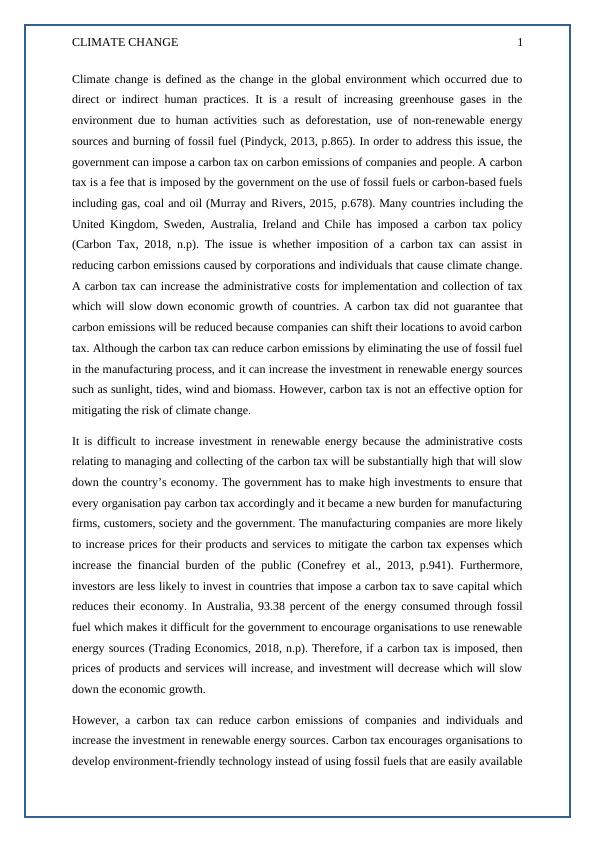Carbon Tax as a Solution for Climate Change
6 Pages2084 Words257 Views
Added on 2023-06-14
About This Document
This essay discusses the effectiveness of carbon tax as a solution for climate change. It explores the impact of carbon tax on reducing carbon emissions, increasing investment in renewable energy sources, and the economic and financial difficulties faced by governments in implementing carbon tax policies. The essay concludes that carbon tax is not the best solution for addressing climate change due to lack of a globally harmonised carbon tax system and suggests exploring other policies such as eco-friendly transportation systems or recycling.
Carbon Tax as a Solution for Climate Change
Added on 2023-06-14
ShareRelated Documents
End of preview
Want to access all the pages? Upload your documents or become a member.
Carbon Tax is Best Solution for the Climate Change
|6
|2016
|327
Canadian Climate Change Policy Assignment 2022
|4
|451
|37
Strategies to Mitigate the Impact of Global Climatic Change
|6
|998
|251
National Climate Resilience and Adaptation Strategy
|4
|833
|16
Economics : Manufacture Renewables to Build Energy Security
|3
|437
|49
Australian Current Policy on Renewable Energy Report
|17
|4391
|31



